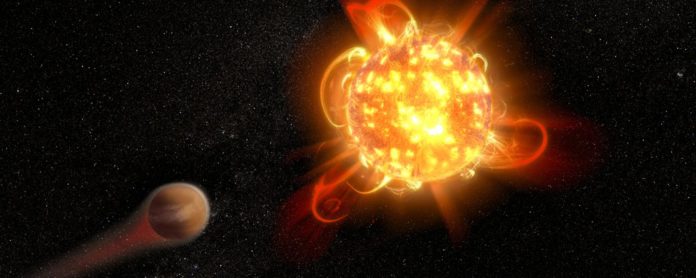Superflares are massive bursts of energy from the surface of a star. They eject Superflares are massive bursts of energy from the surface of a star.
Till now, scientists used to think that such explosions take place often on young and active stars. But a new study suggests that superflares can also occur on older, quieter stars like earth- however once in a millennium.
The phenomena were primarily discovered from an unlikely source: the Kepler Space Telescope. When the NASA spacecraft, launched in 2009 was seeking out planets orbiting stars far from Earth, it found something odd in those stars- a light from distant stars seemed to get suddenly, and momentarily, brighter.
Yuta Notsu, the lead author of the study and a visiting researcher at CU Boulder said, “Our study shows that superflares are rare events. But there is some possibility that we could experience such an event in the next 100 years or so.”
“Normal-sized flares are common on the sun. But what the Kepler data was showing seemed to be much bigger, on the order of hundreds to thousands of times more powerful than the largest flare ever recorded with modern instruments on Earth.”
“When our sun was young, it was very active because it rotated very fast and probably generated more powerful flares. But we didn’t know if such large flares occur on the modern sun with very low frequency.”
To find this out, scientists turned to data from the European Space Agency’s Gaia spacecraft and from the Apache Point Observatory in New Mexico. Over a series of studies, the group used those instruments to narrow down a list of superflares that had come from 43 stars that resembled our sun. The researchers then subjected those rare events to a rigorous statistical analysis.
From quantifications, scientists found that younger stars tend to produce the most superflares. The generate the event once in a week.
The results of the study also are the wake-up call for life on our planet. But, scientists are not sure when the next big solar light show is due to hit Earth.
Notsu said, “If a superflare occurred 1,000 years ago, it was probably no big problem. People may have seen a large aurora. Now, it’s a much bigger problem because of our electronics.”
The group published its latest results in May in The Astrophysical Journal.
